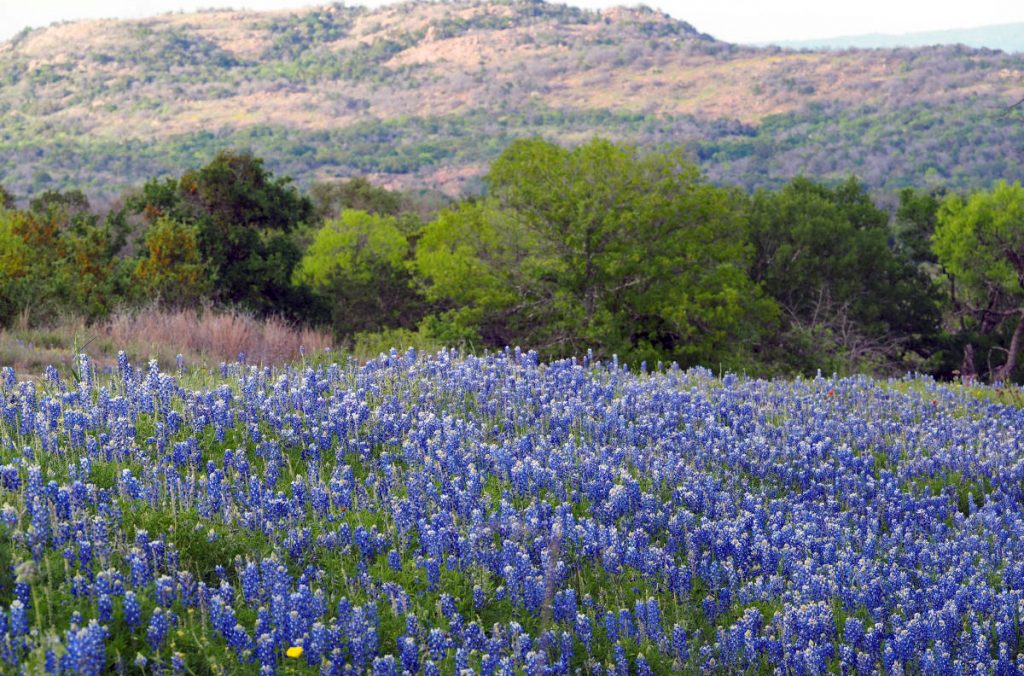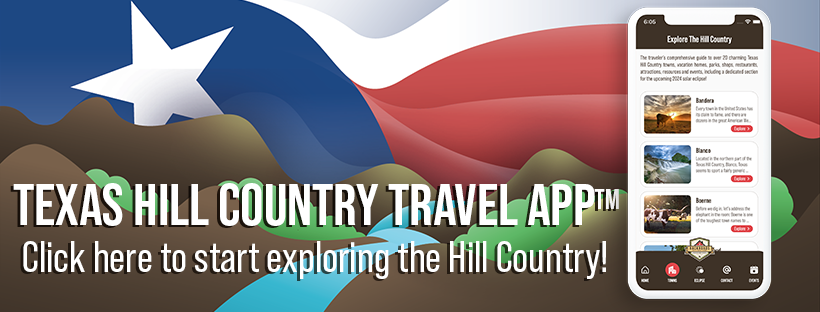Bluebonnets in the Hill Country

The Texas countryside is known for wildflowers, especially thanks to LBJ’s First Lady, Lady Bird Johnson. Her passion for colorful carpets of wildflowers drew attention to them, and inspired plantings to beautify roads throughout the state. She’d be proud to know Texas wildflowers will forever be part of her legacy!
One star player in our wildflower spectrum is the bluebonnet. Back in 1901 the Texas State Legislature decided it was high time the state had its own official flower. Some blooms considered were those of the cotton boll, and the brightly-colored flowers of various species of cactus. The Colonial Dames of Texas made a strong argument for the bluebonnet: it blooms over more of the state than most flowers, and its brilliant blue against the Texas skies created a breathtaking natural display. The Legislature agreed, and the bluebonnet officially became the state flower on March 7, 1901.
A couple interesting points before we explore where you can find bluebonnets in the Texas Hill Country. First, Texas has SIX state flowers. Half a dozen varieties of bluebonnets brighten the Texas countryside, and no one of them could be named the official flower...so, they all are! Second, what about the legendary “Yellow Rose of Texas”? No roses of that color grow naturally in the Lone Star State; our wild roses vary from white to pink to red. The majority of yellow roses are greenhouse-created hybrids, which disqualifies them from being the official state flower, despite the popular song.
If you’re planning a bluebonnet trip to the Texas Hill Country, the best time of year is generally early March through mid-April; the average spring sees a six-week period of time when the blooms are at their peak. Factors like the harshness of the preceding winter to rainfall amounts can affect the timeline, but early spring is overall the best viewing window for bluebonnets.
So where in the Hill Country is there prime viewing for bluebonnets? Overall, the roadsides and fields in the northern half of the region have better soil and climate for bluebonnets. You’ll see vivid blue throughout the entire Hill Country, but as a general rule of thumb, the farther north you go, the more you’ll see.
The “Texas Wine Trail” is a fantastic corridor along which you can view bluebonnets; this is the stretch of US Highway 290 between Johnson City on the east and Fredericksburg on the west. What’s good for the bluebonnets is also good for the vineyard, and you’ll find several wineries along this road that offer great wildflower views! For a comprehensive listing of these wineries, download the Texas Hill Country Travel App for free, and select the category “Wineries” under towns like Fredericksburg, Stonewall, Hye, and Johnson City.
Northeast of Fredericksburg is the Willow City Loop. This stretch of road is popular for bluebonnet viewing, but keep in mind it can be crowded with traffic during peak blooming season. The Willow City Loop is on private property; you’re welcome to tour bluebonnet country here, but please respect the land surrounding the road. While it’s not illegal to pick bluebonnets, it is considered trespassing on private property. Be aware of where you are, and respect your fellow flower admirers.
Brilliant shades of blue (and other colors, too) await you during your spring visit to the Texas Hill Country! We invite our viewers to share photos of bluebonnets and other wildflowers and scenery. Help us show off our beautiful state!
Maximize your enjoyment while visiting by utilizing the Hill Country Travel App, your ultimate exploration companion! Offering real-time updates on over 20 towns, local establishments, events, and beyond, this complimentary download is accessible on both iPhone and Android platforms.
Discover the magic of Texas Hill Country with our Facebook Group! Whether you’ve booked a stay with Backroads Reservations, are planning your next getaway, or simply love this scenic region, our community is for you. Connect with fellow fans and celebrate the stunning beauty of the Hill Country!

